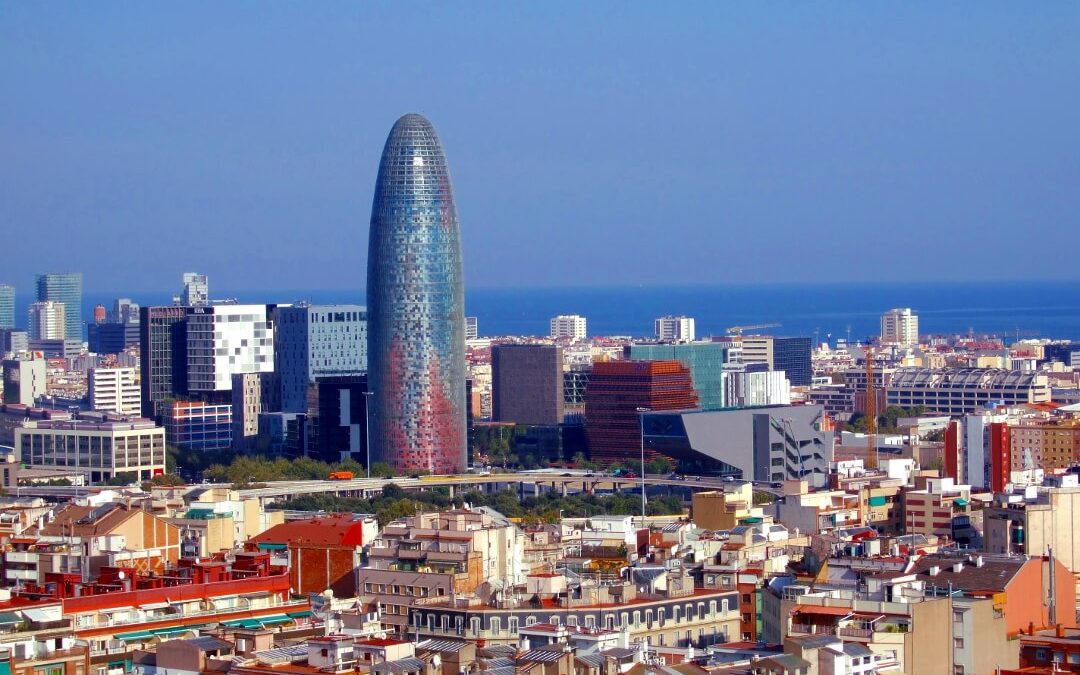What to see in Barcelona? It might seem a very simple question to answer but it’s not at all. It depends on the time available to the traveler, in addition a good organisation is required as the offer is extensive. In the lines below, we propose you a bit of tourism in Barcelona a la carte for 1 or 2 days, even for those who already know the city.
Visit Barcelona in one day

In the Gothic Quarter is where you will find the emblematic Ramblas, the mythical walk that goes from Plaza Catalunya to the sea. A bit off the Rambla, the Cathedral will welcome us first with its nineteenth century façade in the Plaza Nueva. If you visit it, do not miss its cloister! Besides, we strongly recommend you to walk the narrow streets nearby that will take you to the Middle Ages. Close to the Plaça del Rei, if you still want to go further in time, visit the Barcelona City Museum, from where you will go down to the underground and be prepared to be dazzled with the ruins of the ancient Roman city, Augusta Barcino.
The Sagrada Familia

Walking along Paseo de Gracia
The Sagrada Familia’s neighborhood is not far away from the city centre, so you can either go by subway, bus, tourist bus, bike or taxi … Otherwise you could walk to it going through the Paseo de Gracia, from Plaza Cataluña.
Paseo de Gracia, besides being a wide street, adorned with beautiful street lamps, benches and terraces, it’s the location of a great number of modernist and Art Nouveau façades; Among them: Casa Batlló, Casa Amatller and La Pedrera. For those looking for shopping, this is also a street full of the best fashion and luxury stores.

Visiting Barcelona in two days
How do we take advantage of 24 more hours in Barcelona? To the initial proposal (Gothic Quarter – Paseo de Gracia – Sagrada Família) we will add three unforgettable places. More than to add, to extend the tour of the first day with very attractive suggestions: the District of Ribera – the Picasso Museum and the neighborhood of La Barceloneta.la iglesia de Santa María
The neighbourhood of La Ribera, less well known than the Gothic Quarter, has one of the city jewels : Santa Maria del Mar church, known for the best seller “The cathedral of the sea” by Ildefonso Falcones. But there are more “gemstones” in this place: the Paseo del Borne that leads from the church to the old Borne market with its open-air 18th-century ruins, the fantastic Estación de Francia, the dependencies of the Palacio de Mar and the old Lonja or the Citadel Park.
Despite this list, Calle Montcada will ring you a bell if we tell you that’s where Picasso Museum is housed in one of the many palaces on the street. A nourished permanent collection of the genius of Malaga works or interesting temporary exhibitions, it’s what you will discover in this amazing museum.
You will also find a very remarkable offer of gastronomy and nocturnal leisure; But if true must be told, in this and other aspects, a few steps away has an excellent rival: the neighbourhood of Barceloneta. In Barcelonina’s Blog, we have already talked about this small Barcelona of fishermen and tourists. Shops, restaurants, terraces, harbour views and, best of all, a wonderful urban beach that in summer congregates equally to the foreign and local public.
Revisiting Barcelona

Are you fans of Gaudí prodigious works? If you have already discovered the Sagrada Familia, La Pedrera or even the Park Güell, you must go to Nou de la Rambla street, close to the Rambla and visit the Palau Güell which the architect built for his patron, the aristocratic Güell family, in 1885. This is an amazing building for many reasons: the dimensions of the building, the wrought iron works of the façade and the way floors are connected ( From the basement and the stables to the roof, connected by ramps, stairs and ventilation patios ). For years it has been of great contrast the existence of this stately home in the middle of a neighbourhood as bohemian as the so-called «Barrio Chino».
Gaudí’s creativity seems endless. If you are not visiting Barcelona for the first time, you will want to walk away from the city centre and head towards the Collserola area to visit La Torre Bellesguard. This architectural caprice that Gaudí built inspired by the medieval castle of Martín I, on the outskirts of Barcelona. In previous posts, we have already talked in detail about it , as well as the rehabilitation and maintenance works done by the family to which belongs. A place full of symbols representing Catalonia’s history, with a religious and yet a magical touch.

Returning to the Barcelona’s city centre to end up in a corner as central as unknown (although less and less). It is the square of the Holy Martyrs Sant Just and Pastor located between the Plaza de San Jaime and the Via Laietana. Here stands a small Gothic façade that holds, almost
There are many mysterious stories of this temple, about Masonry and Templars. The truth is that, around it, it seems that time has stopped: small stairs, one of the oldest public fountains of the city built by a noble hunter knight, a quiet square in which crossing streets lead us to other treasures such as art galleries, wineries, cocktail shops or restaurants.
Barcelonina invites you to wander around 24 or 48 hours, or yet better, return and visit Barcelona with us!



